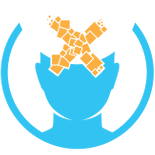Head-mounted display: Difference between revisions
Appearance
Xinreality (talk | contribs) |
Xinreality (talk | contribs) |
||
| Line 25: | Line 25: | ||
===Visual Pathway=== | ===Visual Pathway=== | ||
The fundamental operation of an HMD involves generating an image and directing it into the user's eyes. This typically follows a path: | The fundamental operation of an HMD involves generating an image and directing it into the user's eyes. This typically follows a path: | ||
#'''[[Central Processing Unit]] (CPU) / [[Graphics Processing Unit]] (GPU)''': Process application logic, handle [[tracking]] data, and render the images (frames) intended for display. In [[Integrated HMD|standalone HMDs]], these processors are inside the headset; in [[Discrete HMD|tethered HMDs]], they are in a connected PC or console. | |||
#'''Display Panel(s)''': Small, high-resolution screens (e.g., [[LCD]], [[OLED]], [[Micro-OLED]]) receive the rendered images from the GPU. Binocular HMDs typically use either one panel displaying side-by-side images or two separate panels, one for each eye. | |||
#'''Optics ([[Lens|Lenses]])''': Placed between the display panels and the user's eyes, lenses serve multiple crucial functions: | |||
#*Magnification: They enlarge the small display image to fill a significant portion of the user's [[Field of View]] (FOV). | |||
#*Focus: They collimate the light or set the focal plane, typically at a distance of 1.5-2 meters or optical infinity, reducing eye strain compared to focusing on a screen inches away. | |||
#*[[Distortion Correction]]: Simple magnification often introduces optical distortion (like pincushion distortion). The rendered image is typically pre-distorted (barrel distortion) in software to counteract the lens distortion, resulting in a geometrically correct view for the user.<ref name="LensDistortionVR">Oculus Developer Documentation. "Distortion Correction". Retrieved 2023-10-27. [https://developer.oculus.com/documentation/native/pc/dg-render-distortion/ Link]</ref> | |||
#'''Eyes''': The light (photons) carrying the image information passes through the lenses and enters the user's pupils, forming an image on the retina. | |||
===Stereoscopic Vision=== | ===Stereoscopic Vision=== | ||
| Line 39: | Line 39: | ||
Tracking the user's head movement is fundamental to creating immersive and interactive experiences, particularly in VR. As the user moves their head, the system updates the rendered images accordingly, making the virtual world appear stable and allowing the user to look around naturally. Failure to track accurately and with low latency can lead to disorientation and [[Motion sickness]] (often termed "cybersickness" in VR/AR contexts).<ref name="LaViolaMotionSickness">LaViola Jr., Joseph J. (2000). "A discussion of cybersickness in virtual environments". ''ACM SIGCHI Bulletin''. '''32''' (1): 47–56. doi:10.1145/333329.333033. Retrieved 2023-10-27. [https://ieeexplore.ieee.org/document/947376 Link]</ref> Tracking operates in multiple [[Degrees of Freedom]] (DoF): | Tracking the user's head movement is fundamental to creating immersive and interactive experiences, particularly in VR. As the user moves their head, the system updates the rendered images accordingly, making the virtual world appear stable and allowing the user to look around naturally. Failure to track accurately and with low latency can lead to disorientation and [[Motion sickness]] (often termed "cybersickness" in VR/AR contexts).<ref name="LaViolaMotionSickness">LaViola Jr., Joseph J. (2000). "A discussion of cybersickness in virtual environments". ''ACM SIGCHI Bulletin''. '''32''' (1): 47–56. doi:10.1145/333329.333033. Retrieved 2023-10-27. [https://ieeexplore.ieee.org/document/947376 Link]</ref> Tracking operates in multiple [[Degrees of Freedom]] (DoF): | ||
* | *'''[[Rotational Tracking]] (3DoF)''': Tracks orientation changes: pitch (nodding yes), yaw (shaking no), and roll (tilting head side-to-side). This is the minimum required for a basic VR experience where the user can look around from a fixed viewpoint. It is typically achieved using an [[Inertial Measurement Unit]] (IMU) within the HMD, containing sensors like: | ||
*[[Accelerometer]]: Measures linear acceleration (and gravity). | |||
*[[Gyroscope]]: Measures angular velocity. | |||
*[[Magnetometer]]: Measures the local magnetic field (like a compass), used to correct for gyroscope drift, especially in yaw. [[Sensor fusion]] algorithms combine data from these sensors to provide a stable orientation estimate.<ref name="IMU_VR">Pell, Oliver (2017-07-12). "Use of IMU in Virtual Reality Systems". Analog Dialogue, Analog Devices. Retrieved 2023-10-27. [https://www.analog.com/en/technical-articles/imu-in-virtual-reality-systems.html Link]</ref><ref name="imu">Wikipedia (20 Apr 2025). "Inertial measurement unit". Retrieved 2024-05-15. [https://en.wikipedia.org/wiki/Inertial_measurement_unit Link]</ref> | |||
* | *'''[[Positional Tracking]] (6DoF)''': Tracks both orientation (3DoF) and translation (movement through space: forward/backward, left/right, up/down). This allows the user to physically walk around, lean, crouch, and dodge within the virtual environment, significantly enhancing immersion and interaction. 6DoF tracking is achieved through various methods: | ||
**'''[[Outside-in tracking]]''': External sensors (cameras or infrared emitters/detectors like [[Lighthouse (tracking system)|Valve's Lighthouse system]]) are placed in the room to track markers (passive reflective or active IR LED) on the HMD and controllers. Examples: Original Oculus Rift (Constellation), HTC Vive/Valve Index (Lighthouse).<ref name="LighthouseExplained">XinReality Wiki. "Lighthouse". Retrieved 2023-10-27. [https://xinreality.com/wiki/Lighthouse Link]</ref><ref name="lighthouse" /> | |||
**'''[[Inside-out tracking]]''': Cameras mounted on the HMD itself observe the surrounding environment. Computer vision algorithms, often employing [[Simultaneous Localization and Mapping]] (SLAM) techniques, identify features in the room and track the HMD's movement relative to them. This eliminates the need for external sensors, making setup easier and enabling larger, unrestricted tracking volumes. Most modern standalone and many tethered HMDs use inside-out tracking. Examples: Meta Quest series, HTC Vive Cosmos, Windows Mixed Reality headsets.<ref name="SLAM_VRAR">Yousif, K.; Bab-Hadiashar, A.; Hand, S. (2019-07-30). "A Review on SLAM Techniques for Virtual and Augmented Reality Applications". ''Sensors''. '''19''' (15): 3338. doi:10.3390/s19153338. PMC 6696193. Retrieved 2023-10-27. [https://www.mdpi.com/1424-8220/19/15/3338 Link]</ref><ref name="insight2019" /> | |||
===Latency=== | ===Latency=== | ||

